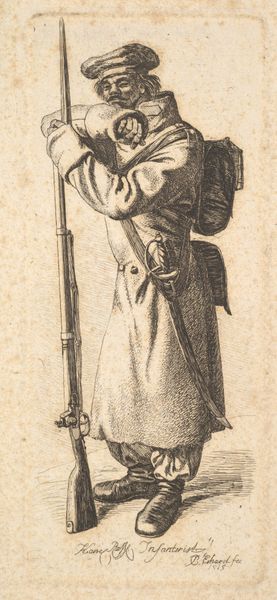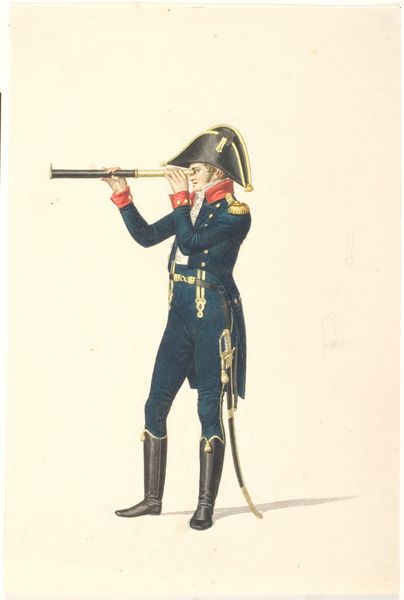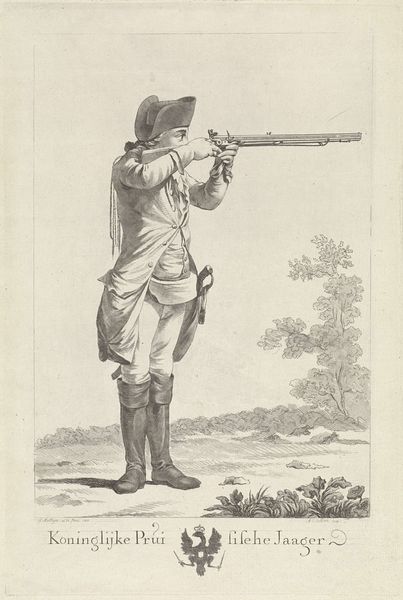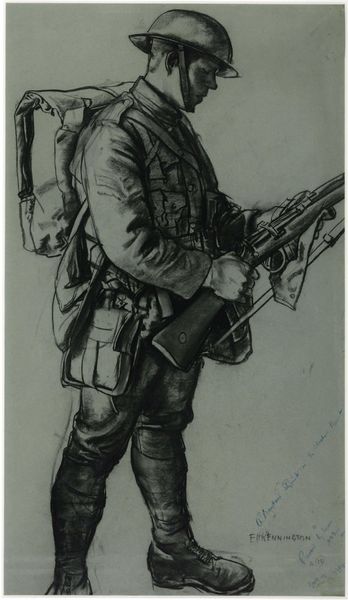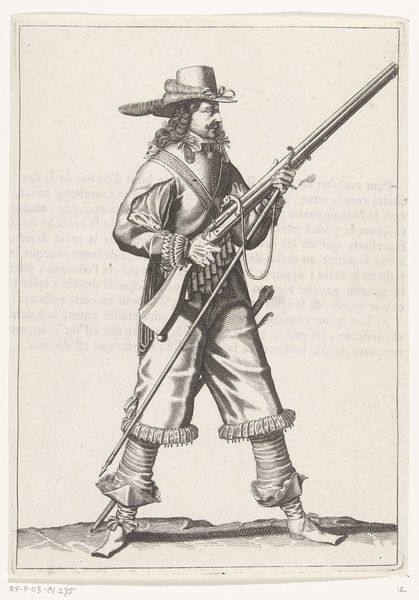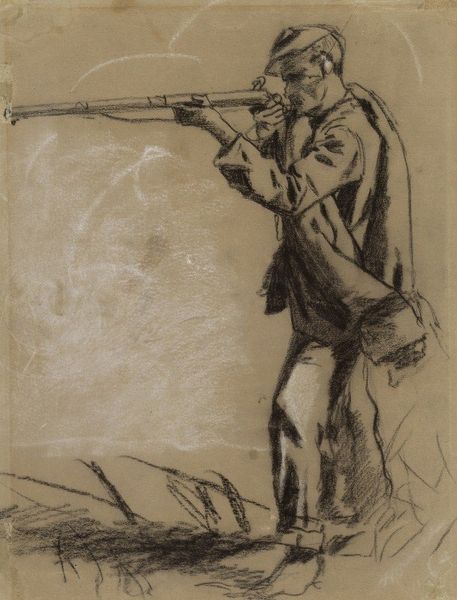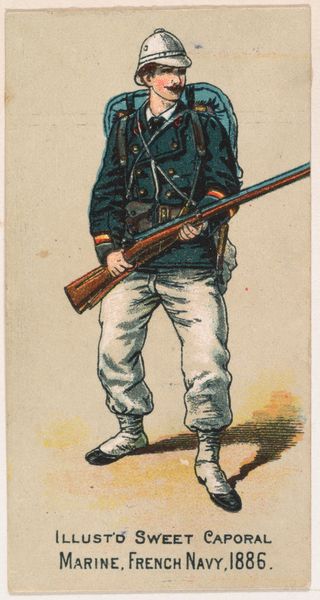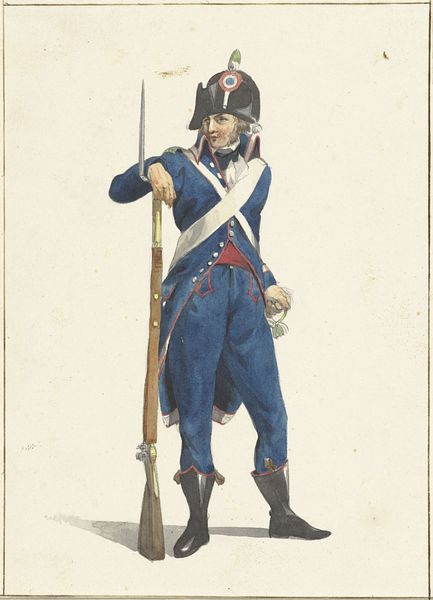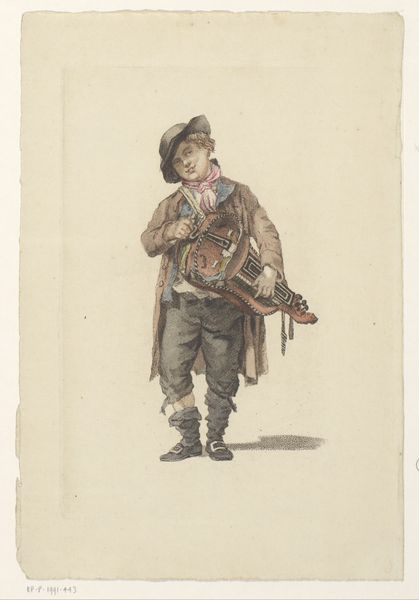
Dimensions: length 47.4 cm, length 29.9 cm, diameter 17.1 mm, length 29.8 cm
Copyright: Rijks Museum: Open Domain
Curator: Before us, we have a flintlock belt pistol, crafted around 1780 and held in the collection of the Rijksmuseum. Editor: My first thought is how refined it is. It's an object made for violence, yet its form speaks of care, even artistry, through the materials used, which, as noted, included mixed metals and wood. The handle's curved silhouette is smooth, almost sensual. Curator: Indeed. Observe the balance it strikes, not just between its constituent materials, but the geometric harmony achieved within. Notice the polished wood of the grip contrasting with the cold steel of the barrel. And how the trigger guard flows in gentle curve from the ornate hammer mechanism. This visual arrangement lends the piece not just balance but a subtle narrative tension as well. Editor: Yes, but let’s consider what this "balance" actually represents within its historical context. These weapons were tools of oppression, empire, and often deployed in silencing dissenting voices. Does appreciating the weapon's geometric arrangement sanitize that? It speaks volumes of the era’s brutal reality and the vast discrepancies in lived experience contingent on class and colonial power. Curator: Those historical dynamics absolutely shape our reading of this work. And yet, by isolating formal attributes, such as balance, tension, and arrangement, we’re given the chance to consider how these qualities serve functions far removed from immediate conflict. How can visual equilibrium stand to signify broader sociopolitical ones? Editor: But that's where it gets murky for me. This "visual equilibrium" enabled hierarchies and maintained systems of subjugation, for the era was awash in imbalance. Art is never detached, and as we regard its lines and angles, let us consider how it enabled the lines and angles that confined entire populations. Curator: Well, I would posit we must engage that dissonance. Can the understanding of composition offer any broader recognition, even mitigation of power structures? By parsing form, we gain tools to analyze all forms. Editor: An intriguing idea… but I fear that by focusing too heavily on the artistic form, the conversation, and our attention to those marginalized and silenced by its very existence runs the risk of fading into the background. Curator: That's a very fair point. Perhaps it is this tension – appreciating an object's crafted beauty, whilst simultaneously acknowledging its contentious history, and ultimately holding those competing concepts simultaneously – is where true critical appreciation lies.
Comments
No comments
Be the first to comment and join the conversation on the ultimate creative platform.
